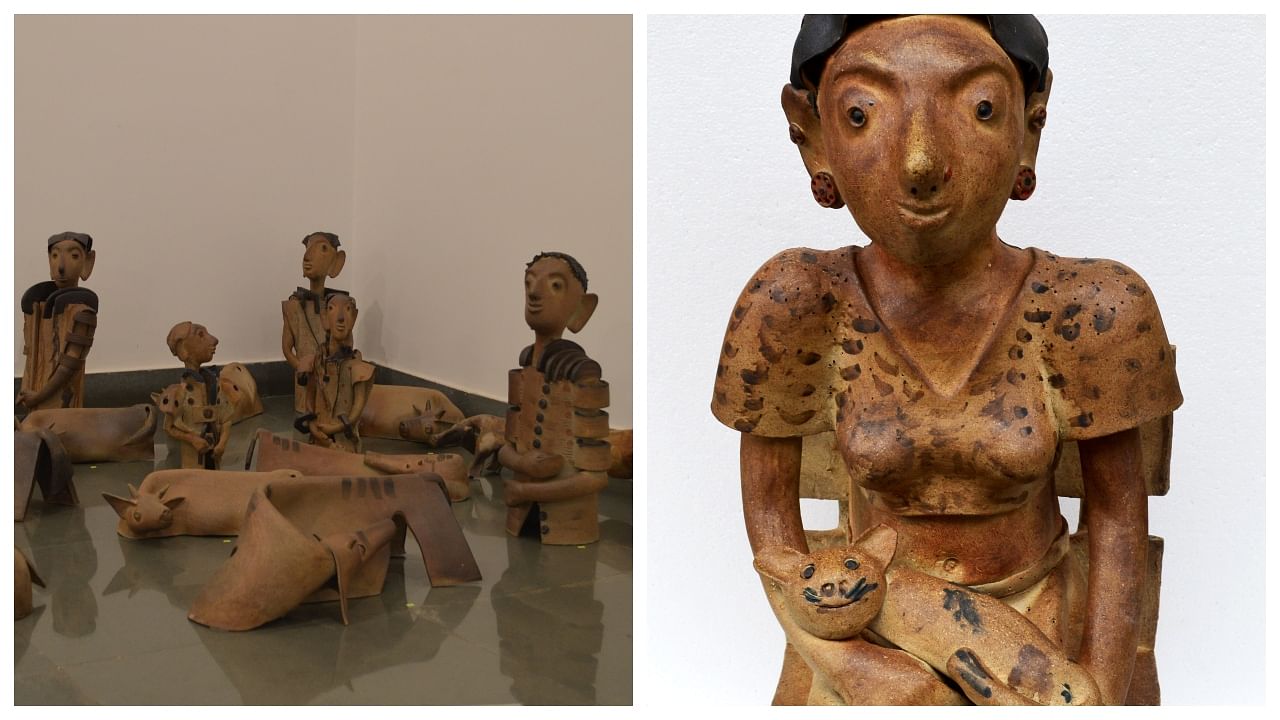
Commonly associated with fancy dinner service, high-end decorative knick-knacks, or glazed studio pottery, ceramic is an uncommon choice for down-to-earth sculptures evoking uncomplicated, even-paced life. But in doing just that, G. Reghu has not only created an army of extraordinary, unpretentious figures in ceramic but also made a distinct name for himself among contemporary sculptors of India.
Reghu’s latest ceramic sculptures are currently on display at Bengaluru’s Gallery Sumukha in a solo show that runs through July 16.
The natural brown ceramic figures with a decidedly Indian rural/ tribal stylisation of their features attest to the artist’s sensitivity towards indigenous arts.
Early in his career, Kerala-born Reghu came under the wing of Jagdish Swaminathan, the artist-ideologue who brought mainstream attention to India’s rich tribal arts in the 1980s.
“I was at a camp in Bharat Bhavan, Bhopal, in 1987, my final year at the College of Fine Arts, Thiruvananthapuram, when J. Swaminathan saw me working in stone asked me about my plans. I was undecided, so he awarded me a scholarship to work at Bharat Bhavan for two years,” recalls the 63-year-old artist.
He went on to spend the next 15 years in the central Indian cultural hub before he shifted to Bengaluru, where he is now based. It was at Bharat Bhavan that Reghu shifted from stone to ceramic.
“In India, people generally think of ceramic as pottery, which is just one of its aspects. Within a year at Bharat Bhavan, I held a successful show of my ceramic works at Mumbai’s Jehangir Art Gallery. That gave me the confidence to explore ceramics further,” he said.
His genre of choice is figurative, which he has explored in various sizes, from pint-sized works to 5 ft-high sculptures.
“I prefer wood kiln that gives a natural colour to clay after a certain temperature. I don’t like glaze, which is more suited to pottery. Glaze spoils the expression of figures. I have been hand-modelling my figures for the past 35 years,” he said
Besides Swaminathan, there was another lasting influence on Reghu’s propensity to create art close to nature.
His family lived near a hospital on the outskirts of Thiruvananthapuram, where Elizabeth Baker, wife of the British-born Indian architect, Laurie Baker, worked as a leprosy doctor. Having lost his father when he was three, Reghu would play at the hospital campus with his siblings while his mother went to work.
“Mrs Baker used to give us pieces of paper to draw on. She liked my drawings and encouraged me,” he said, sharing that the Bakers supported him through his college education.
Laurie Baker imprinted on young Reghu’s mind the importance of living a sustainable life.
“I live simply and make simple art, portraying simplicity of life when lived in harmony with nature,” he said.
(The writer is a New Delhi-based journalist, editor and arts consultant. She blogs at www.archanakhareghose.com)